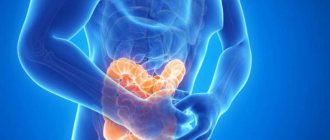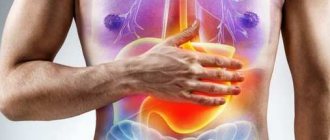Causes of pressure changes
If a person feels nauseous and has a headache, the cause may be high or low blood pressure. Normal indicators differ at different periods of a person’s life: on average, 120/70 is considered an average variant of the norm. Therefore, everything above is called hypertension, everything below is called hypotension. Both conditions are extremely unpleasant and dangerous due to their complications.
To the question: can you feel sick with pressure - the answer is yes. In accordance with the values of the indicators, normotensives are distinguished (there are only a few of these lucky ones), hypertensives and hypotensives. In people who do not have problems with the condition of blood vessels, and the reason for pressure surges lies precisely in this, a decrease or increase in indicators occurs under the influence of external factors. This happens against the background of physical activity, during recovery from an infectious disease, or with a weakened immune system. The condition does not pose a threat to life and, as a rule, goes away on its own.
Identifying the causes of headaches
The causes of headaches are determined after patients at the Yusupov Hospital undergo a comprehensive neurological examination:
- ECHO - encephalography;
- electroencephalography;
- Doppler ultrasound of head and neck vessels;
- rheoencephalography;
- radiography of the skull;
- magnetic resonance and computed tomography of the brain;
- fundus examinations.
Patients receive consultation from the necessary specialists (otolaryngologist, vertebrologist, cardiologist, oncologist). If indicated, they are consulted by leading specialists from partner clinics.
Nausea with low blood pressure
Things are completely different for people who have problems with blood vessels and blood pressure. Hypotonic people are often weather-dependent and do not tolerate intense loads, stress, and disturbances in rest patterns. With numbers of 90/60, many of them feel good without experiencing discomfort. Nausea, like a number of other symptoms, occurs during a hypotonic crisis.
Symptoms of a sharp drop in blood pressure in an adult:
- dizziness due to general weakness,
- headache in the bridge of the nose, temples,
- nausea,
- vomit,
- disorientation,
- fainting.
Causes of headache and nausea
Temple headaches and nausea can occur for many reasons. There are the following main types of headaches:
- tension headache;
- headache caused by increased or decreased intracranial pressure;
- headache caused by infections;
- post-traumatic headache;
- headache with long-term use of medications.
Headache, nausea, weakness can occur under the influence of stress. Headache, which is a consequence of anxiety, depression of various types, developing under the influence of everyday and work troubles, is quite common among patients at the Yusupov Hospital. It develops due to excessive tension in the muscles attached to the skull.
This disease affects people aged 25 years and older. Typically, the intensity of the disease remains at the same level and does not increase with physical activity. Pain sensations are concentrated in the temporal, occipital or frontal areas. The pain is either compressive in nature without side syndromes. Patients often come to the doctor complaining of a feeling of heaviness or pressure. They say that it’s as if their head is being pulled down by a helmet.
In the majority of patients examined by doctors at the neurology clinic, sensitivity of the muscles of the head and neck is detected. Attacks of headaches caused by tension can last up to several days. With constant stress, the patient becomes chronic. The cause of the transition of acute headaches to the chronic form of the disease is repeated stress, pathology of the temporomandibular joint and cervical spine, and constant use of large doses of caffeine and analgesics.
Migraines are often the cause of severe headaches and nausea. Patients experience periodically recurring attacks of intense, pulsating headaches that last up to three days. Usually, unpleasant sensations appear in one half of the head, mainly in the forehead, eyes or one of the temples. Migraine headaches are aggravated by physical activity. It may be accompanied by nausea, vomiting, drowsiness and lethargy. Patients cannot tolerate bright lights and loud sounds.
Young women are most often affected by migraines. This is facilitated by the rich hormonal background of the body, characteristic of the age of 25-30 years. An attack is the result of an increase in functional activity in specific centers of the brain.
Some foods can trigger an attack of headache, nausea, or dizziness during a migraine:
- cheeses;
- coffee, cocoa, chocolate;
- vinegar, marinade, mustard;
- ketchup, mayonnaise;
- pork, smoked meat, some types of fish;
- spinach, beans, soy, green onions, celery.
Less commonly, headache, nausea, dizziness, and weakness occur after eating citrus fruits, plums, pineapples, avocados, and nuts. The classic “provocateurs” of migraine attacks are alcoholic drinks: red wine, champagne, brandy, cognac, beer and liqueur and beer.
What to do if you have a severe headache and nausea? A few tips can help reduce the frequency of migraine attacks:
- you should reduce the consumption of foods and drinks that provoke attacks;
- avoid long breaks in meals;
- sleep at least 8 hours a day;
- avoid stressful loads;
- quit smoking;
- increase physical activity, especially swimming;
- spend more time in the fresh air;
- avoid long trips by car, bus, boat;
- Do not stay in a room with strong unpleasant odors.
One of the most common causes of symptomatic headaches is cerebrovascular disease. In patients with arterial hypertension (high blood pressure), the pain is usually localized in the back of the head and often occurs in the early morning. Typically, the cause of a headache is a sharp and (or) significant increase in blood pressure, to which the human vascular system simply does not have time to adapt.
Headache associated with increased intracranial pressure may be an early sign of a brain tumor. It intensifies with sneezing, coughing, tilting the head, wakes people up at night, and is often accompanied by vomiting without previous nausea and transient episodes of visual impairment.
Nausea, dizziness, and headache often occur due to cervical osteochondrosis or other pathology of the cervical spine. The pain is usually localized in the cervical-occipital region, often spreading to the forehead and temple, shoulder and arm. Headache of moderate intensity, aggravated by moving the head, staying in an uncomfortable position for a long time, or pressing on the cervical-occipital muscles. Mobility of the cervical spine is limited.
Post-traumatic headaches can persist for several months after a traumatic brain injury. Usually it is diffuse and dull. The pain intensifies with physical activity and is accompanied by the following symptoms:
- decreased attention and memory;
- various emotional disorders (tearfulness, low mood);
- dizziness;
- increased fatigue;
- sleep disturbance.
In male patients, short-term pain that occurs during physical effort is not based on a disease. Close to this category is orgasmic pain - a headache that occurs in men during sexual intercourse and lasts several minutes. If intense pain occurs during intimacy and persists for several hours, you should consult a doctor at the Yusupov Hospital.
Types of hypotension
Factors that provoked a drop in values can be physiological and organic. To normalize indicators, you need to eliminate the root cause of their deviation. Hypotension can be true or secondary; treatment approaches are completely different. Nausea and vomiting in the primary form are always associated with a psycho-emotional factor:
- physical fatigue,
- consequences of stress,
- deficiency of nutrients in the body,
- weather dependence.
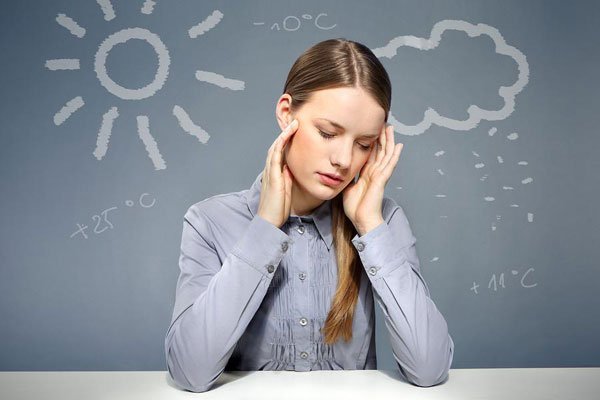
During a crisis, a person is worried about chills, it seems to him that his face is “burning,” his heart rate may increase and his temperature may rise slightly (up to subfebrile numbers of 37.3-37.50 C). Nausea with low blood pressure occurs due to insufficient blood flow to the brain.
The pressure surge occurs suddenly and sometimes goes away on its own.
What to do if your blood pressure drops sharply:
- Give the victim medicine to normalize blood pressure, after first measuring it, of course. Most often it is Citramon, Caffeine.
- A cup of strong coffee or tea with sugar, maybe with chocolate, will enhance the effect of medications.
- A person may feel nauseous from uneven compression of blood vessels: to eliminate this, take an antispasmodic (No-Shpa, Trigan).
- Sedatives are added if there has been a stressful situation.
As a rule, this simple set of tools is quite enough to normalize the patient’s condition.
It’s a completely different matter when a drop in blood pressure is a secondary symptom. You cannot do without qualified medical care.
Secondary hypotension is caused by external factors. The feeling of nausea with low blood pressure occurs due to:
- traumatic brain injuries,
- cardiovascular diseases,
- disturbances in the functioning of the endocrine system,
- internal bleeding.
In this case, the pressure is normalized only after the organic pathology is eliminated; accordingly, the treatment will be completely different and should be prescribed by a doctor.
Dizziness and weakness
The causes of nausea, dizziness, headache and weakness can be associated with serious and complex diseases, however, such symptoms do not always indicate a critical condition. Often, a similar condition is observed before menstruation, and there is a completely scientific explanation for this.
The causes of nausea and headaches before menstruation are associated with fluctuations in hormone levels, which can cause a significant deterioration in well-being. In addition, the menstrual cycle is a small, but blood loss. It can provoke the development of anemia.
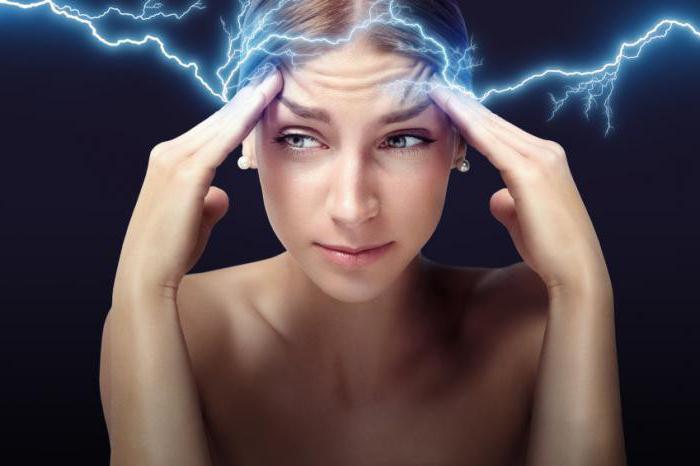
The causes of nausea, headaches and dizziness may also be hidden in low blood pressure. The following factors can lead to the occurrence of these symptoms:
- insufficient intake of nutrients into the body;
- starvation;
- frequent stay in a stuffy room;
- stress;
- excessive physical activity.
Often, discomfort can occur during menopause, which is associated with hormonal changes in the body. In addition, all these signs can be observed during pregnancy.
Nausea with high blood pressure
Vomiting with high blood pressure is associated with vasoconstriction and subsequent irritation of the vomiting center.
An increase in blood pressure to critical levels is called hypertension. Its complication is called hypertensive crisis. Feeling unwell from high blood pressure is accompanied by symptoms of dizziness, nausea and vomiting. If the pressure rises, a person often experiences an uncontrollable attack of fear of death, as a result of which an excess amount of adrenaline is released into the blood. The pulse quickens, weakness appears, and at the peak of the attack the patient vomits.
Indirectly, autonomic disorders can be observed: abdominal pain and diarrhea. If blood pressure is high, the body absorbs excess water to compensate in order to relieve the vascular bed. Diarrhea of this origin stops after stabilization of pressure.
It is important to know! Hypertension is a cardiovascular disease that requires the supervision of a therapist and cardiologist.
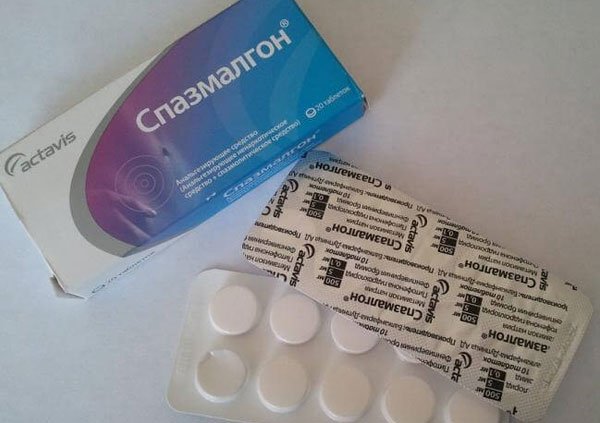
There are three degrees of development of the disease. The second and third require constant monitoring and medication to stabilize cardiac parameters. Without treatment, a heart attack or stroke may occur.
What to do if you have high blood pressure:
- An antispasmodic (No-Shpa, Spazmalgon) will help stop an attack of nausea.
- The next step will be taking antihypertensive drugs in combination with diuretics.
- If after taking measures the pressure does not stabilize, it is necessary to call emergency medical help to prevent the development of complications.
Symptoms of hypertension
Patients suffering from high blood pressure do not feel its characteristic symptoms at all. In addition to the gag reflex and lightheadedness, hypertension tends to manifest itself in the form of dizziness, increased anxiety, headache, and rapid heartbeat. Unnoticeable symptoms are life-threatening.
In order to control blood pressure, it must be measured regularly and not neglect the recommendations of a qualified specialist. People who are overweight, smokers, and those who have recently suffered an injury are especially required to take care of their health. Patients over the age of 40 are no exception.
If, after visiting a specialist, it is discovered that the upper pressure reading is more than 160, this indicates incipient hypertension.
With high blood pressure, your eyes may darken, your body temperature may rise, and your face may turn red. If you ignore these symptoms, the next stage will be shortness of breath, difficulty breathing, and decreased blood flow. Therefore, you should not start your state until such a scenario develops.
Folk remedies against nausea
If vomiting from pressure happens to you often, alternative medicine methods will come to the rescue. They can be used either independently or in combination with medications:
- In case of sudden nausea in an adult or child, lollipops, mints, and lemon help. The resorption process has a calming effect on the body and makes breathing easier.
- Healing infusion for blood vessels.
You need to take equal amounts of mint, St. John's wort, chamomile and lemongrass inflorescences, chop them and pour boiling water over them. After the tea has steeped, you can drink it with the addition of honey and lemon. The course of taking the medication is 2 months. As a result, you will not only get stronger and healthier blood vessels, but also improve the functioning of your cardiovascular system.
Do you know? According to calculations in recent years, the prevalence of hypertension among the population is more than 40%. The age of people at risk of the disease is constantly getting younger.

Stages of development of high blood pressure
Based on the fact that abnormal blood pressure is a very common phenomenon, some people have learned to ignore it. At the same time, they don’t even think about the fact that low or high blood pressure can serve as a basis for other serious pathologies.
So, how does hypertension develop:
- Periodic numbness of the fingertips, dizziness (vertigo), insomnia, fatigue, weakness. It is worth noting that such symptoms may persist for more than one year before the disease progresses to another stage.
- The primary symptoms include improper functioning of the heart muscle and kidneys. Blood circulation in the brain is impaired. If all this is ignored, it will lead to irreversible consequences in the form of a heart attack or stroke.
- If a person has not yet started treatment, the likelihood of death increases. Therefore, it is better not to bring developments to such an extent.
Taking into account the results of research over recent years, more than 40 percent of the world's population suffers from hypertension. But this figure is increasing every day. The risk group is mainly people over forty years old; there are, of course, young people, but they are a minority.
How to protect yourself from pressure changes
If you are at risk or have first-hand knowledge of the disease, you need to constantly take care of your vascular health. A few simple rules will help you make friends with your body and reduce unpleasant symptoms to a minimum:
- Drink enough water, water, not coffee or tea. This is an excellent way to reduce blood viscosity. By the way, when the values fall below 90/60, a glass of water drunk in 2-3 minutes. significantly alleviates the condition and normalizes indicators.
- Do not overuse fatty, spicy and salty foods - this contributes to fluid retention in the body and negatively affects the condition of blood vessels.
- Don’t get up suddenly in the morning, slowly turn over on your side, stretch, “wake up your vascular system.”
- For preventive purposes, after consulting a doctor, you can use herbal preparations and tinctures (eleutherococcus, ginseng, lemongrass, lemon balm) to strengthen blood vessels.
- Do not abuse alcohol and nicotine, but rather stop using them completely.
- Twice a year it is recommended to undergo massage sessions, physiotherapy, and therapeutic exercises.
- Proper organization of the daily routine and adequate sleep are mandatory at any age.
- To maintain normal blood pressure, regularly use a tonometer; hypertensive patients often do not feel the rise in numbers, and this threatens the development of complications.
By adhering to these simple rules, you will learn to prevent the problem from worsening and attacks of nausea due to pressure changes. Do not self-medicate, visit your doctor regularly and take care of yourself! Be healthy!
Blood pressure surges - what to do | #pressure surges #pressure #edblack Dizziness and nausea: causes and treatment Dizziness (vertigo) with blood pressure surges
Danger during pregnancy
Often, headache, weakness and nausea accompany a woman during the first trimester of pregnancy. This is usually associated with various kinds of pathological processes and is provoked by a restructuring of the woman’s body. Many people experience migraine during this period, but serious measures to treat it need to be taken only after the birth of the child.

Despite the fact that headaches with nausea in a woman during pregnancy are common and, as a rule, do not hide any serious pathologies, in any case you should consult your doctor. Among the main causes of headaches and malaise in pregnant women are:
- dehydration;
- general fatigue;
- hunger;
- insomnia.
To avoid all these problems, you need to maintain a normal daily routine, lead an active lifestyle, eat promptly and correctly, do not overwork, and also avoid significant overexertion.
Taking absolutely any medications while carrying a child must be agreed upon with the attending doctor, so it is advisable to clarify in advance which of them will be the safest. Self-medication is strictly prohibited.
The main danger of discomfort during pregnancy is due to the fact that you can miss a very serious disease - sinusitis, meningitis, glaucoma, dystonia. Vomiting leads to dehydration, and a prolonged headache is very irritating and nerve-wracking, which harms the child.
If the attacks last long enough and occur frequently, then it is advisable to go to a neurologist. He will conduct an examination to determine the cause of the headache, as well as select the safest medications.
Why does blood pressure decrease?
When a hypotensive person complains of nausea, it is necessary to conduct a full examination of the body, which should begin with a general analysis of venous blood. Often, against the background of hypotension, hemoglobin in the blood decreases; such a deviation from the norm requires nutritional correction and the introduction of iron-containing drugs to stabilize the indicators.
Attention! The main cause of nausea during hypotension is swelling in the brain tissue, when there is excessive pressure on the receptors and provocation of the gag reflex.
The deviation cannot be neglected, because against such a background life-threatening conditions for the patient may appear. Blood pressure readings may be reduced as a result of the following factors. The reasons may be as follows:
- with vegetative-vascular dystonia as a result of excessive vasoconstriction;
- when the arteries of the brain are damaged by cholesterol deposits (atherosclerosis);
- decreased blood volume as a result of serious blood loss (injuries, wounds, internal bleeding, loss of fluid in the body, heavy and prolonged menstrual bleeding in women);
- diseases of the heart and blood vessels;
- constant fluctuations in the concentration of hormones in the human body;
- serious changes in the functioning of the endocrine system;
- anemia;
- oncological diseases;
- pulmonary artery blockage;
- states of shock;
- long-term use of antihypertensive drugs in irregular doses.
External factors can affect blood pressure fluctuations:
- long stay in hot countries;
- professional participation in heavy sports;
- work in difficult conditions;
- intense physical activity.
Hypotension is not classified as a separate disease of the cardiovascular system and its danger is often overlooked. With low blood pressure, the patient may feel significant discomfort: it is constantly accompanied by dizziness, which in critical situations can result in fainting and hypotensive crisis.
Regardless of the provoking factors, a condition that causes anxiety always requires medication correction, and timely consultation with a doctor is the key to recovery.








